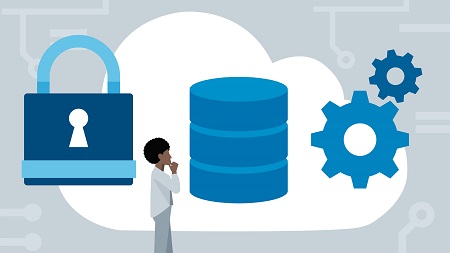
English | MP4 | AVC 1280×720 | AAC 44KHz 2ch | 5h 2m | 624 MB
Amazon Web Services (AWS) is one of the most widely used cloud platforms, and the go-to for many organizations looking to reduce costs by adopting a cloud infrastructure strategy. This course starts by examining cloud concepts and best practices. Next, it walks you through how to design your infrastructure to prevent failure. Then, you’ll discover how to implement elasticity with automation, and strategies to decouple application components. Then, learn how to optimize for performance and for cost. Last, put concepts into practice by setting up the server-based architectures for a web application in addition to implementing a serverless approach using AWS API Gateway and Lambda.
Topics include:
- Benefits of cloud services
- Making architectures scalable
- Examining cloud constraints
- Virtual servers, EC2, and Elastic IP
- Using the Amazon machine image
- Elastic load balancing
- Using CloudWatch for monitoring
- Security Models
- Elastic block storage
- S3, CloudFront, and Elastic Beanstalk
- Handling queues, workflows, and notifications
- Caching options and services
- Identity and access management
- Creating a custom server image
- Application deployment strategies
- Serverless architectures
Table of Contents
1 Welcome
2 What you should know
3 Using the exercise files
4 Cloud services
5 Business benefits
6 Technical benefits
7 Scalable architectures
8 Understand elasticity
9 Cloud constraints
10 Role of an AWS admin
11 Design for failure
12 Implement elasticity
13 Decouple your components
14 Optimize for performance
15 Keep things secure
16 Optimize for cost
17 Virtual servers, EC2, and Elastic IP
18 Regions and availability zones
19 The Amazon machine image (AMI)
20 Elastic load balancing (ELB)
21 Cloud monitoring – CloudWatch
22 Elastic block storage (EBS)
23 Manage relational database service (RDS)
24 Understand bootstrapping
25 Autoscaling
26 Scalable storage – S3 and CloudFront
27 Elastic Beanstalk
28 OpsWorks
29 CloudFormation and CloudFormer
30 CodeDeploy
31 Simple queue service (SQS)
32 Simple workflow service (SWF)
33 Simple notification service (SNS)
34 Scalable No SQL data store – DynamoDB
35 Caching – AWS Elasticache
36 Caching – AWS CloudFront
37 Search – AWS CloudSearch
38 Serverless architectures – API gateway
39 Serverless architectures – AWS Lambda
40 The shared security model
41 Identity and access management (IAM)
42 Security groups
43 Virtual private cloud (VPC)
44 Keeping tabs on the tab
45 Matching supply with demand
46 Utilizing cost effective resources
47 Web application architecture
48 Sign up for AWS
49 Create a new IAM user
50 Creating a key pair
51 Configuring a security group
52 Launching an EC2 Instance
53 Creating an ELB
54 Connect to the EC2 instance via HTTP
55 Connect to the EC2 instance via SSH
56 Create a MySQL RDS database
57 Create a custom server image
58 Auto scaling
59 Use Elastic Beanstalk
60 Use S3 for web application hosting
61 Lambda and the gateway API
62 Store data on DynamoDB
63 Deploy the API and test the application
64 Next steps
Resolve the captcha to access the links!